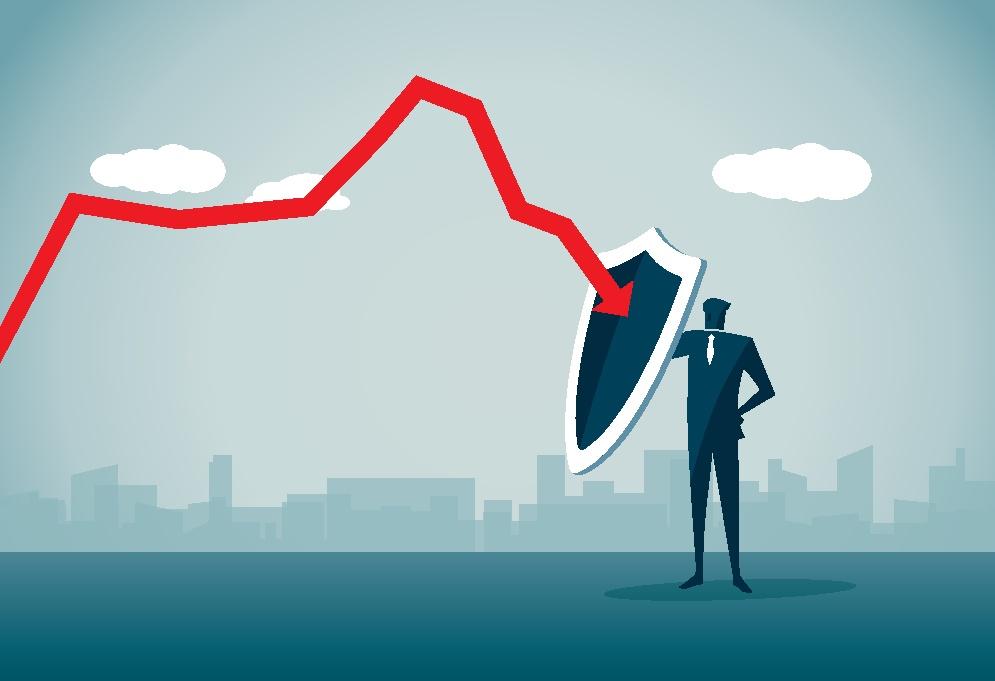Are you a pre-retiree or retiree who’s nervous about the recent stock market volatility? Worried that it might be the start of a stock market crash, as predicted recently by a few pundits?
Unfortunately, “worry” is not a strategy! Instead, you’ll want to plan ahead to survive stock market crashes without knowing when they’ll happen, since experts and personal investors alike generally have a poor track record for predicting when the market will crash. Keep in mind that during a long retirement, it’s inevitable that you’ll experience a few stock market crashes.
Let’s look at four strategies that can give you some peace of mind when the market is crashing. Hopefully they’ll help prevent you from panicking and selling your stock investments when the market is depressed, which history has consistently demonstrated to be a money-losing move.
1. Cover Basic Living Expenses With Protected Sources Of Retirement Income
Make sure you have enough sources of monthly, protected, lifetime retirement income that will cover most, if not all, of your must-have living expenses. Examples of protected lifetime income include Social Security, pensions, and income annuities sold by insurance companies. You might also consider payouts from bond ladders, providing it’s a carefully-designed part of your retirement income portfolio.
After using your protected lifetime income to pay for your essential expenses, you could then pay for any nice-to-have living expenses, such as travel or gifts, with sources of variable retirement income. If necessary, you could cut back on these less-essential expenditures due to a market crash (see the next point).
2. Adjust Systematic Withdrawals From Invested Assets To Reflect Recent Investment Experience
As part of your retirement income portfolio, you might decide to establish sources of variable retirement income, such as systematic withdrawals from invested assets. For these income streams, consider using a dynamic withdrawal method that periodically adjusts your withdrawal amount to reflect recent investment experience.
In the event of a stock market crash, you’d reduce your withdrawals from these accounts. This strategy helps protect you against the so-called sequence-of-returns risk. This risk can happen when you continue withdrawing from invested assets at a high rate after a stock market crash and early in your retirement. The consequence of continuing a high rate of withdrawal could be that you might not have sufficient assets to bounce back when the market recovers.
3. Keep A Few Years Of Withdrawals in Liquid, Protected Assets
If you decide to set up sources of variable retirement income, such as systematic withdrawals from invested assets, you could estimate the amount of the withdrawals you’re likely to make in the next few years. Then, invest that amount in liquid, protected assets such as money market funds. This way, you won’t need to sell stock investments at depressed values to make your systematic withdrawals. This can give your invested assets more time to bounce back when the market recovers.
4. Consider Paying For Living Expenses With Buffer Assets During A Crash
During a stock market crash, you could suspend making withdrawals from invested assets and instead use buffer assets to help pay for living expenses. This will buy time to allow your stock market investments to bounce back after a crash.
Examples of buffer assets include a reverse mortgage line of credit or whole life insurance with substantial cash values.
You might need to work with a qualified financial advisor to help you effectively implement any of these strategies. In particular, the fourth strategy can require special expertise with incorporating buffer assets into your retirement income strategy.
Spend the time it takes to design careful strategies that will help you ride out stock market volatility. This will let you sleep better at night when the market crashes, so you can enjoy all your retirement years.
Read the full article here















